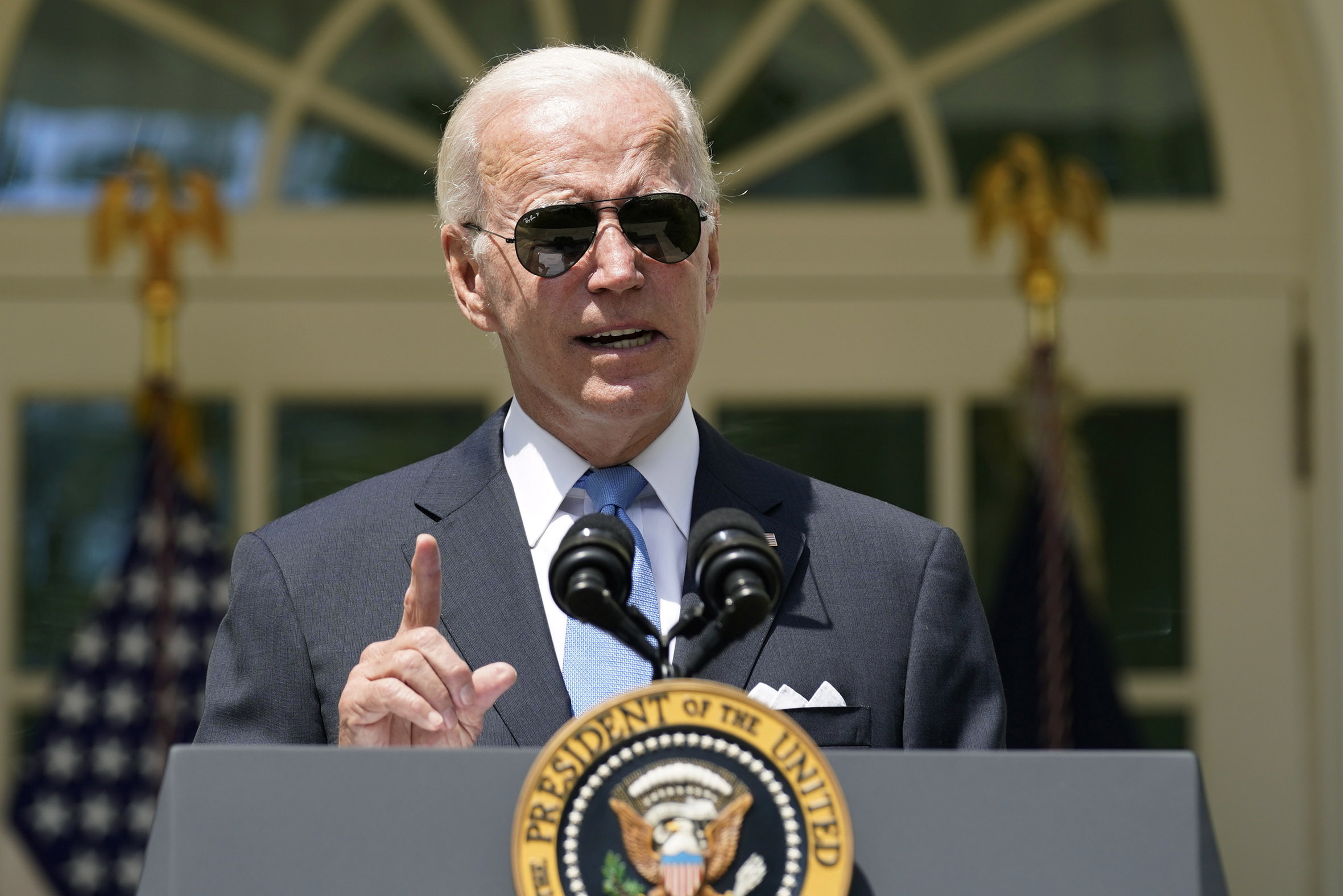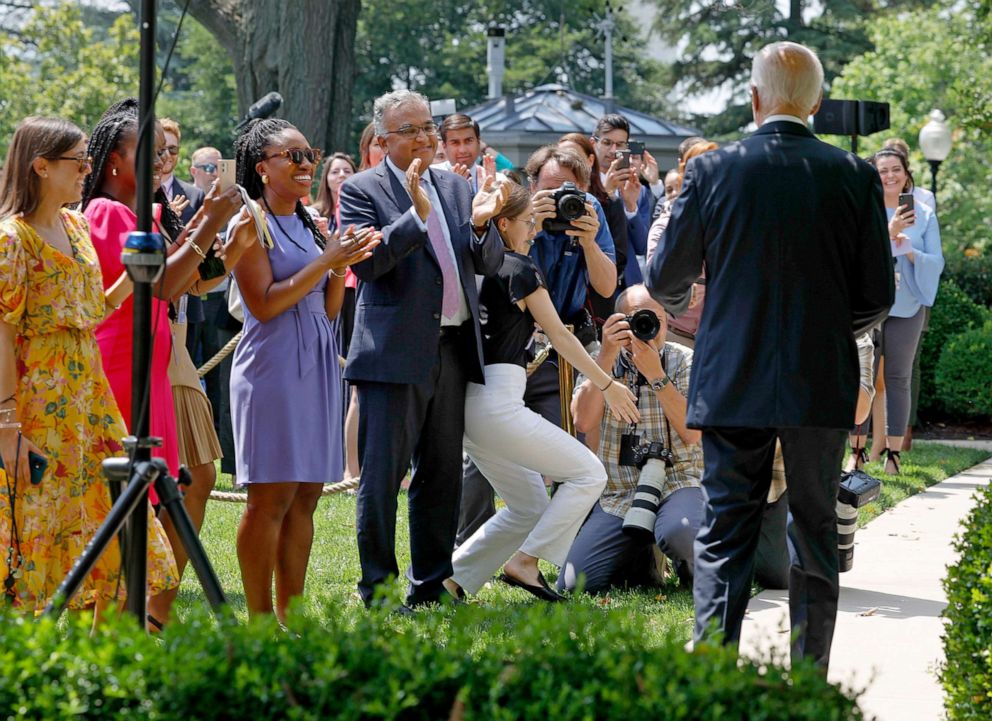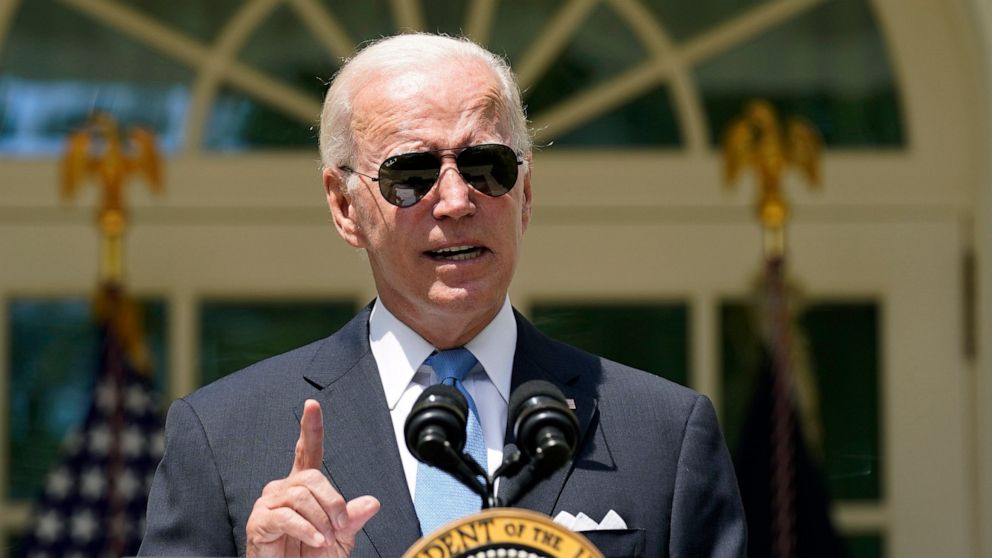Biden compares his COVID recovery to Trump's hospitalization in Rose Garden speech
After five days working in isolation at the White House, President Joe Biden reemerged on Wednesday -- and told the American public that his mild bout of COVID-19 was a testament to the power of vaccines and therapeutics.
"Even if you get COVID, you can avoid winding up with a severe case," Biden said from the Rose Garden late Wednesday morning, in his first public appearance after back-to-back negative antigen test results.
Speaking for roughly 10 minutes, the president tied his own recovery to what he called his administration's successful efforts in tackling the pandemic.
"You can now prevent most COVID deaths, and that's because of three free tools the Biden administration has invested in and distributed this past year: booster shots, at-home tests [and] easy-to-use, effective treatments. We got through COVID with no fear, I got through it with no fear, a very mild discomfort because of these essential, life-saving tools," he said.
"You don't need to be president to get these tools used for your defense," he said.
He contrasted that experience with predecessor Donald Trump, who also became sick with COVID but at a much earlier stage in the pandemic.

"When my predecessor got COVID, he had to get helicoptered to Walter Reed Medical Center. He was severely ill. Thankfully, he recovered," said Biden who rarely discusses Trump directly. "When I got COVID, I worked from upstairs."
Trump, like Biden, also urged the public not to give into fear after he recovered from the virus: "Don't be afraid of Covid. Don't let it dominate your life," Trump said on social media at the time.
In the Rose Garden Wednesday, Biden said the reason for optimism was clear while acknowledging the toll of the years-long pandemic. (Left unsaid were the problems both Biden and Trump's administrations faced with testing, health infrastructure and encouraging comprehensive vaccinations.)
"COVID was killing thousands of Americans a day when I got here. That isn't the case anymore," Biden said. "You can live without fear by doing what I did -- get boosted, get tested and get treatment. At the same time, my administration remains vigilant. Right now, we have the tools to keep you from getting severely ill or dying from COVID, but we're not stopping there."
His comments mark a continuation of his White House's message that while the coronavirus is here to stay -- something many public health experts have long been warning and fighting against -- life can go largely back to normal for many, if not all, Americans.
"Let's keep emerging from one of the darkest moments of our history with hope and light for what can come," Biden said.
How Biden got sick
The president likely had the highly contagious BA.5 subvariant, and his symptoms included a runny nose, cough, sore throat, a slight fever and body aches, the White House has said. Kevin O'Connor, Biden's physician, never reported any abnormalities in Biden's pulse, blood pressure, respiratory rate or oxygen saturation throughout his infection, which was first discovered on Thursday.
Biden finished his five-day course of Paxlovid, a key COVID treatment, 36 hours ago, O'Connor wrote in a memo Wednesday morning that was subsequently released by the White House.
The president's negative tests on Tuesday and Wednesday come less than one week after the president's first positive test last Thursday morning.
Biden told reporters on Monday that all his test results were "good" and "on the button."
As of Wednesday Biden is ending his strict isolation measures after being confined to the White House residence since his diagnosis. He will continue to wear a "well-fitting" mask as needed for 10 days, according to O'Connor.

He worked while in isolation, posting a photograph on Twitter Monday of him and his dog, Commander, saying he "took some calls this morning with man's best co-worker."
Speaking virtually with reporters on Monday while he recovered, Biden said it was Commander who was acting as his alarm clock in isolation. (First lady Jill Biden and the White House cat had temporarily relocated to Delaware.)
The president on Wednesday tweeted a picture of one of his negative tests and wrote that he was returning to the Oval Office. Reporters saw him -- in his customary aviator sunglasses and a mask -- jog out of the residence on Wednesday; his voice seemed notably improved from recent days, without a cough.
Biden "continues to be very specifically conscientious to protect any of the Executive Residence, White House, Secret Service and other staff whose duties require any (albeit socially distanced) proximity to him," O'Connor wrote in his memo on Wednesday.
Biden will increase his testing cadence in light of the possibility of a Paxlovid "rebound," O'Connor wrote, referring to a seemingly rare but increasingly reported phenomenon in which COVID symptoms recur or there is the development of a new positive viral test after having tested negative.
The president is fully vaccinated and has received two booster shots, but at the age of 79 was considered to be at a higher risk for severe illness.
Dr. Ashish Jha, the White House COVID-19 response coordinator, stressed after Biden's diagnosis that all Americans should take advantage of vaccinations and treatments courses.
"This is a president who's double-vaccinated, double-boosted, getting treatments that are widely available to Americans and has at this moment a mild respiratory illness," Jha told ABC's "This Week" on Sunday. "This is really good news, and this is both vaccines and treatments that are available to everyone. Really important that people go out and get vaccinated and avail themselves of these treatments if they get infected."
The first lady and Vice President Kamala Harris both tested negative for COVID-19 after spending time with Biden before his diagnosis.
ABC News' Mary Bruce, Alexandra Hutzler, Arielle Mitropoulos, Molly Nagle and Emily Shapiro contributed to this report.




